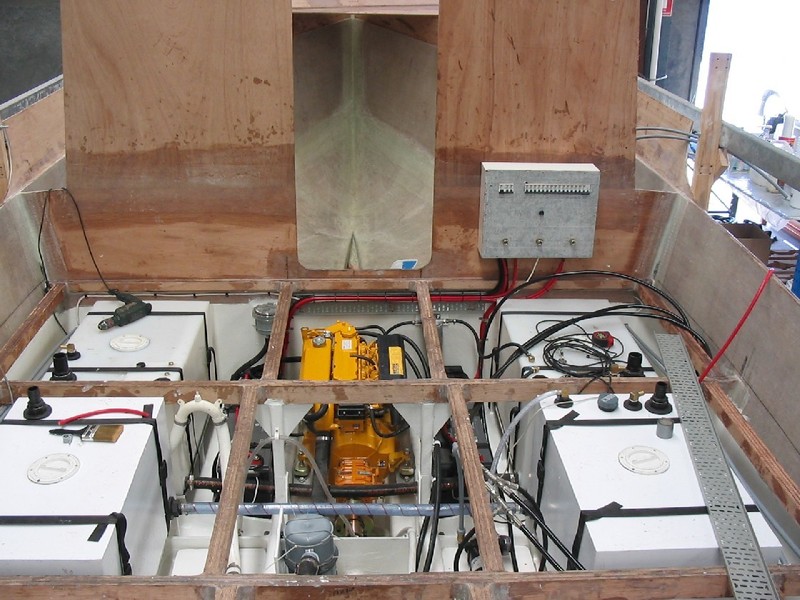GordC
Veteran Member
- Joined
- Jan 12, 2014
- Messages
- 38
- Location
- Canada
- Vessel Name
- Meander
- Vessel Make
- 1981 Grand Mariner 40
Hello All, I am cutting out my old pitted and leaking 200 gallon mild steel saddle fuel tanks. I am planning on replacing them with three Moeller plastic tanks per side. I am interested in your suggestions for plumbing them. The boat is a twin.
Specifically, How would I plumb the fueling manifold? Directly from the deck fitting to one tank and connecting that tank to the other two at the bottom of the tanks by cutting holes in them near the bottom or teeing the fill manifold above the tanks? (possible slow fueling rate)
Would I tee all the vent lines and use the existing vent through hull or drill four more holes through the hull?
Would I run one return line per tank? I guess that would depend on how the fueling manifold is plumbed.
Would you suggest installing valves at the bottom of the tanks to drain off water?
Where would I install ball valves?
So many questions. I appreciate any experience or wisdom you can pass on.
Specifically, How would I plumb the fueling manifold? Directly from the deck fitting to one tank and connecting that tank to the other two at the bottom of the tanks by cutting holes in them near the bottom or teeing the fill manifold above the tanks? (possible slow fueling rate)
Would I tee all the vent lines and use the existing vent through hull or drill four more holes through the hull?
Would I run one return line per tank? I guess that would depend on how the fueling manifold is plumbed.
Would you suggest installing valves at the bottom of the tanks to drain off water?
Where would I install ball valves?
So many questions. I appreciate any experience or wisdom you can pass on.

